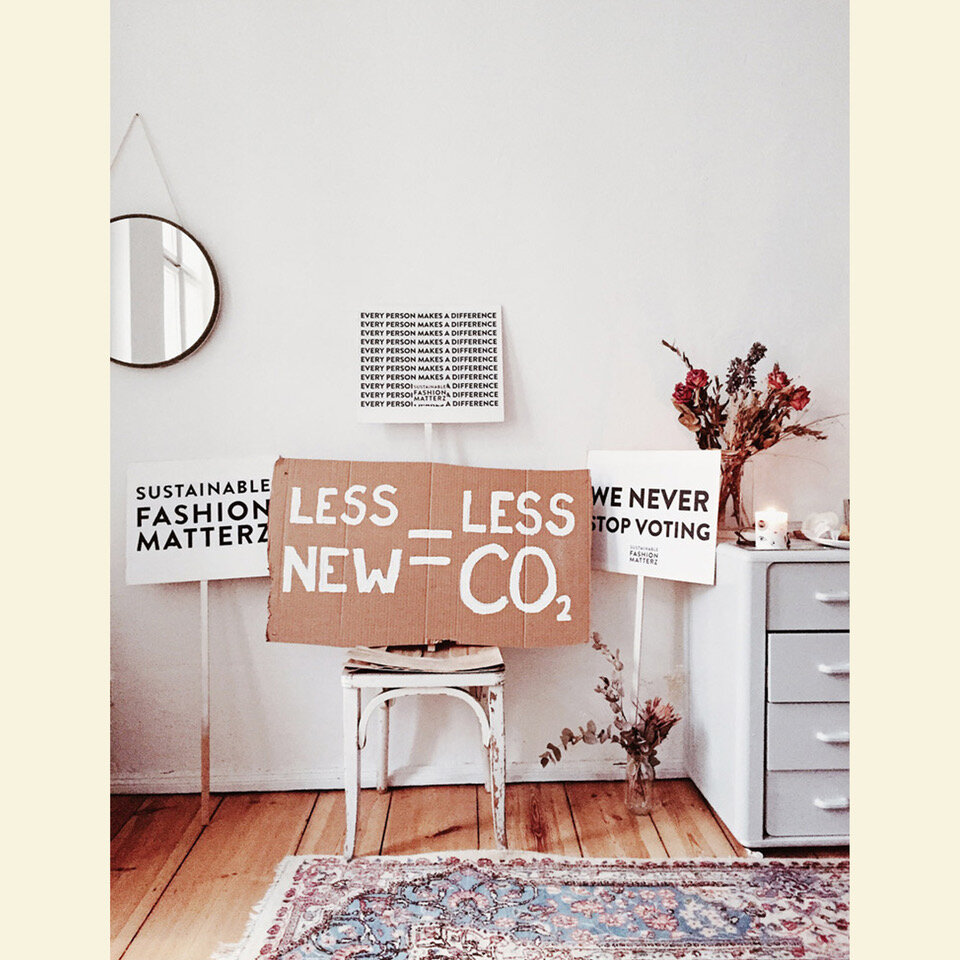Deep Dive: Fast vs. "Slow" (Sustainable) Fashion
As a climate awakening takes place and as the fashion industry is connected to that awakening, it is hard not to have heard of “fast” and “slow” fashion. Environmentalists who want to assure a better future for generations to come condemn fast fashion, and they praise slow fashion for its potential to cure the maladies of the industry. But what exactly constitutes fast fashion? How can one identify an article of fast fashion clothing just by looking at its tags? On the other hand, what characterizes slow or sustainable fashion, and how can we be sure we are spending money on ethical products?
Photography by Becca Mchaffie on Unsplash
Fast fashion is the title granted to clothing created at an accelerated rate, using low-cost materials. Most fast fashion clothing is manufactured using synthetic fibers and textiles, which are derived from fossil fuels. These are the chemicals that end up polluting our environment through water runoff and harmful air pollution. Fast fashion brands have also been mentioned as paying workers inadequate rates, as approximately 85 percent of laborers in this industry do not earn a minimum wage. These workers are usually not paid overtime and are subjected to work in unclean and unhealthy conditions. The ideology behind this accelerated mode of production is to keep up with the ever-changing tastes and desires of consumers and the constantly shifting tide of trends. The environmental impact of these practices is disregarded, as profit mainly drives these companies.
Photography by Cherie Birkner on Unsplash
There are many ways to identify fast fashion, even if you are not a fashion expert. A multitude of mainstream brands have been flagged as participating in these damaging operations, such as Shein, Zaful, and FashionNova. Oftentimes, if a website or brand turns out hundreds of new articles every week, all at low price points, the consumer can assume they are partaking in fast fashion rituals. These types of high-speed “drops” produce a significant amount of waste in comparison to “slow fashion.” Even some high fashion brands abide by the construct of “seasonal” wear, which can also contribute to excess pollution, but this phenomenon is improving rapidly since many brands have begun to phase out the outdated trend of releasing products. Another way to double-check the quality of your garments is to browse the tags. Are all of the materials listed synthetic: polyester, acrylic, nylon? If so, then that could be a signal to seek out a better, more conscious option.
Photography by Karina Tes on Unsplash
Slow fashion, or sustainable fashion, is fast fashion’s commendable alternative. Slow fashion is characterized by its awareness of environmental impact and use of carefully and ethically sourced materials. This type of production does not dish out products at as quick a rate as fast fashion brands. Slow fashion emerged during the recent decade, as companies started to take a closer look at the implications of their products. The mission of slow fashion is to promote more conservative consumerism. These brands want to push the narrative that less is more and that fashion is made to be recycled and re-worn. These are the same principles that lie behind sustainability in general.
Sustainability does not just apply to fashion, but all aspects of our lives. There are many meanings of sustainability, but, overall, it can be understood, as defined by the U.S. Environmental Protection Agency, as maintaining the conditions under which nature and humans can live harmoniously, without threatening the well-being of future generations. Hopefully, we will see more sustainable regulations being implemented in fashion and many other industries, as the Biden administration has expressed plans to hold them accountable by signing Executive Order 14008, which focuses mainly on tackling some of the climate crisis through policy.
Photography by S-o-c-I-a-l-c-u-t on Unsplash
When shopping online or in stores, consumers can put their knowledge of sustainable fashion to the test. In the same way that fast fashion can be identified by taking a look at the tag on an item of clothing, slow fashion is recognizable by the materials used. Usually, clothing crafted sustainably is made of organic, high quality fibers, like linen. These articles are usually sold in smaller, local stores, as opposed to large chains. Slow fashion has fewer styles per collection as well and is released fewer times per year than its destructive counterpart. Photobook has featured many ethical, cruelty-free brands that shoppers can choose from as a substitute for fast fashion.
Photography by Ava Sol on Unsplash
The benefits of sustainable fashion greatly surpass those of fast fashion. At times it may be more costly to invest in slow fashion, but the environmental cost is much lower than that of fast fashion. Ethical products are more durable, practical, and transcend the test of time. It is easy to make a quick purchase with the swipe of a card or the click of a button, without thinking about the origin of the product you are pursuing. However, attention to these types of details is the first and most critical steps in fostering a more sustainable lifestyle.
Photography by Jon Tyson on Unsplash
Article by Kayla Curtis-Evans, Contributor, PhotoBook Magazine
Tearsheets by Isabella Grieco, Graphic Design, PhotoBook Magazine
Opening Image Credit by Drew Graham on Unsplash









